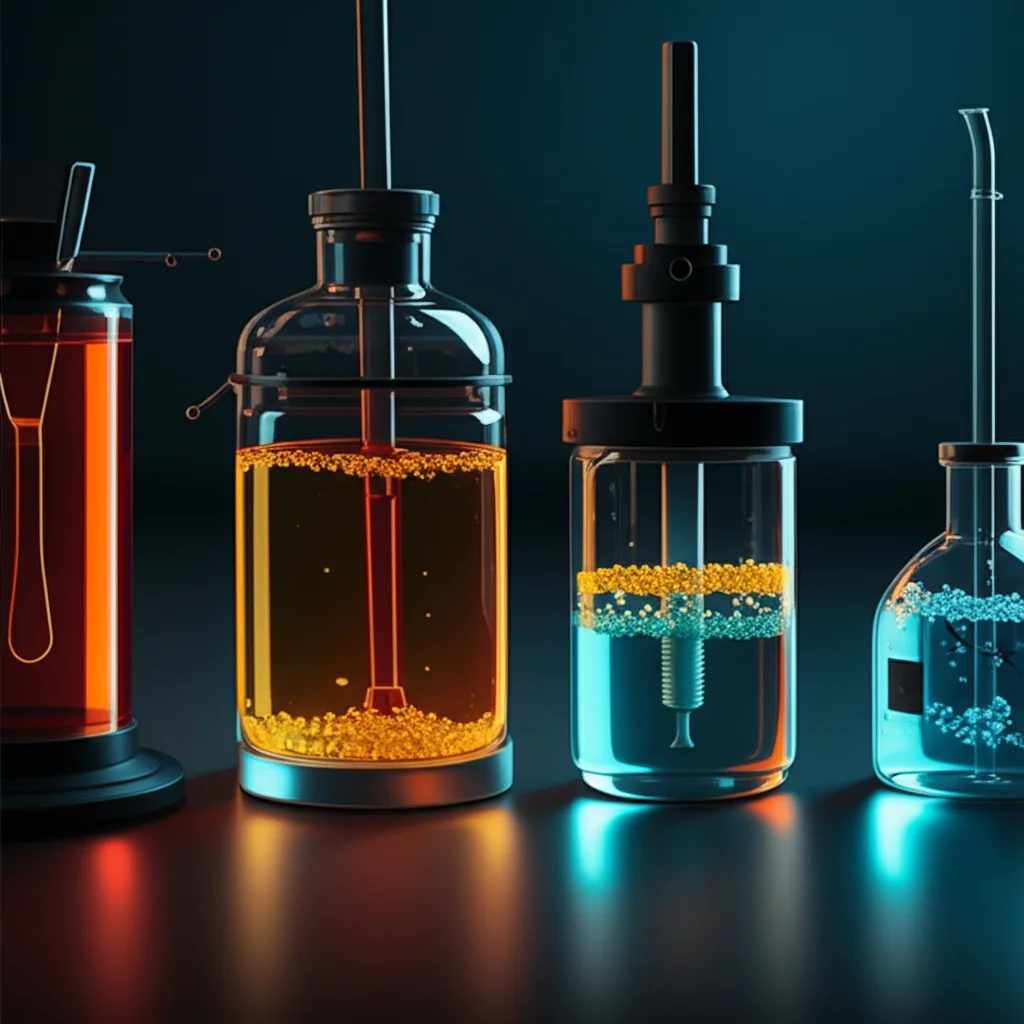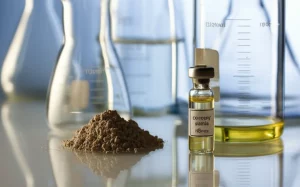Turning Plastic Trash into Biodegradable Treasure: A Game-Changing PET Upcycling Method!
Alright, let’s talk plastic. We all know it’s everywhere, right? Mountains of the stuff, sticking around for centuries. It’s a huge headache for our planet. So, naturally, folks are working hard to find ways to deal with it, and one really cool idea is turning that persistent plastic into something that *can* break down – like biodegradable plastics.
The Plastic Predicament and the Promise of PGA
Think about it: in 2022 alone, we churned out 400 million tons of plastic globally. By 2050, that number could triple! Most of this stuff, especially things like PET (that’s polyethylene terephthalate, the material in most plastic bottles), just hangs around forever in landfills or, worse, our oceans. It’s a real threat to everything.
That’s where biodegradable plastics come in. Materials like polylactic acid (PLA) or polyglycolic acid (PGA) are designed to break down into simple things like CO2 and water in the environment. PGA, in particular, is pretty amazing. It’s super strong, has great barrier properties, and is really good for things like medical uses, oil and gas, and even ecological applications.
But here’s the catch: PGA is expensive to make. Like, US$10,000 per ton expensive! The traditional way involves using some pretty nasty, toxic chemicals like chloroacetic acid, which is bad for both people and the environment. Plus, the purification process is a whole complex mess. Clearly, we need a better, cheaper, and greener way to get our hands on PGA.
Enter Electrochemical Upcycling: A Greener Path
This is where things get exciting! Researchers have been exploring a different route: using renewable electricity to basically “upcycle” waste PET plastics into the building block for PGA, which is called glycolic acid (GA). The basic idea is to break down the PET into something called ethylene glycol (EG) and then use electricity and a catalyst to turn that EG into GA.
This approach is awesome because it skips the toxic chemicals and gives us a reason to recycle PET instead of just burying it. The whole process looks something like this:
- Break down waste PET using alkali (like NaOH) to get EG.
- Use electricity and a catalyst to oxidize the EG into glycolate (GA–).
- Acidify and purify the glycolate to get pure GA.
- Polymerize the GA into PGA.
Sounds great, right? But scaling this up from a lab experiment to something that can handle tons of plastic has hit a few snags.
The Hurdles to Scaling Up
Two main things have been holding back this electrochemical upcycling process:
1. Low Current Density: In the flow systems needed for large-scale production, the amount of electrical current you can push through the reaction area (the current density) has been quite low, usually less than 120 mA per square centimeter. This means the reaction is slow, and you don’t get much GA produced per hour per area. Why? Well, the reaction that turns EG into glycolate uses up hydroxide ions (OH–) right at the catalyst surface. If these OH–ions can’t get to the surface fast enough from the main liquid, you end up with a local “alkali-deficient” spot, which slows everything down, especially when you try to crank up the current. Previous work focused on making the catalyst surface more reactive or adding metals that help with the reaction, but they didn’t really tackle this local OH–shortage problem.
2. Tricky Separation: Getting the pure GA out of the reaction mixture has also been a pain. The process often uses high concentrations of bases, which then need to be neutralized, creating more waste. Plus, the reaction can create several different byproducts, making purification complicated and expensive.
So, the challenge was clear: how do you speed up the reaction significantly *and* make the product separation much simpler and cheaper?

A Smart Solution: The Pd-CoCr2O4 Catalyst
This is where the clever part comes in. The researchers in this study came up with a new catalyst called Pd-CoCr2O4. It’s a hybrid material, and each part plays a specific role to overcome those scaling issues.
* Palladium (Pd): This is the main active site where the EG oxidation reaction happens.
* Chromium (Cr): This is the real genius part for tackling the OH–shortage. Cr3+ is a “hard” Lewis acid, and based on acid-base theory, it’s really good at attracting and concentrating OH–ions near the catalyst surface. Think of it like a magnet pulling OH–right where they’re needed for the reaction. This creates a local “OH–-rich microenvironment.”
* Cobalt (Co): This helps activate OH–into a more reactive form (*OH) on the palladium surface. These *OH species are crucial for breaking down the EG molecule and also help clean the catalyst surface by removing carbon buildup that can poison it.
By combining these elements, they designed a catalyst that not only has active sites but also creates the perfect local environment for the reaction to happen efficiently, even at high current densities.
Impressive Lab Results
Testing this new Pd-CoCr2O4 catalyst in the lab showed some fantastic results. It achieved a current density of around 290 mA cm–2 at a low voltage of just 1.25 V. That’s way higher than the typical values seen before! It also showed great stability, running for over 300 hours without significant loss of activity.
They did all sorts of fancy tests (like XRD, TEM, XPS, and electrochemical measurements) to figure out exactly why this catalyst works so well. It turns out the electronic interaction between Pd and CoCr2O4 makes the Pd slightly electron-deficient, which helps it grab onto OH–. The Cr component’s acidity really does pull OH–towards the surface, boosting the local concentration and diffusion rate of OH–. This OH–-rich environment is key to the high activity and stability.
What’s more, this catalyst is highly selective for making GA–. They got a selectivity of over 94.5%! This high selectivity is partly because the OH–-rich environment actually helps *repel* the negatively charged glycolate product (GA–) from the catalyst surface, preventing it from getting over-oxidized into unwanted byproducts like formate or oxalate. It’s like the catalyst says, “Okay, you’re done, move along!”
Taking it to the Next Level: The Pilot Plant
Lab results are one thing, but can you make this work on a larger scale? That was the big question. So, they built a semi-industrial pilot plant using a stack electrolyzer – basically, multiple reaction cells stacked together – with a total area of 324 cm2 per cell and five cells in series.
They started with 20 kg of actual waste PET (like polyester fibers). They cleaned it up, broke it down into EG and terephthalic acid (TPA), and filtered out impurities like TiO2 and pigments. The liquid containing EG and NaOH was then fed into the stack electrolyzer.
Using their optimized Pd-CoCr2O4 electrodes, they ran the continuous flow electrosynthesis. They achieved a current of 90.72 A at a stack voltage of 6.25 V, resulting in that impressive 280 mA cm–2 current density across the cells. This gave them a GA yield rate of 0.32 kg per hour!

A Smart Separation Process
Remember the separation problem? They tackled that too. Instead of just neutralizing everything, they developed a clever method using vacuum distillation and extraction with a mix of methanol and acetonitrile. This process separates the main product (glycolate) while allowing the unreacted EG and NaOH to dissolve and be recycled back into the electrolyzer. This is a huge deal because it prevents waste and saves money by reusing expensive chemicals. They achieved 99% recovery of NaOH and EG!
After separating the glycolate, they acidified it and used a low-temperature cooling crystallization method to get high-purity GA crystals (>99% purity). This whole separation process is designed to be much more efficient and generate less waste than traditional methods.
Making the Final Product: High-Quality PGA
With the high-purity GA in hand, they polymerized it into PGA using a solvent-free method. They ended up with about 5.3 kg of PGA from the 20 kg of waste PET, which is an impressive 87% overall yield for the polymerization step.
The resulting PGA looked great. It had a high molecular weight, low polydispersity (meaning the polymer chains were pretty uniform in size), and high crystallinity. These properties are important for things like strength and barrier performance. They compared their PGA to commercial PGA and found it had similar mechanical properties and, importantly, *higher* degradation ability in a simulated biological environment. So, it really is a high-quality, biodegradable plastic.

The Bottom Line: Cost and Environment
Okay, so it works in a pilot plant and makes good PGA. But is it affordable and good for the environment? They did a detailed techno-economic analysis and an environmental impact assessment.
For a plant producing 10,000 tons of PGA annually, the estimated cost per ton was initially around US$3,460. But wait, they also get valuable byproducts like TPA (which is also used to make PET, funny enough!) and hydrogen gas from the electrolysis. Selling these byproducts significantly reduces the cost. The *levelized cost* (taking into account byproduct sales) dropped to approximately US$1240 per ton.
Think about that – US$1240 per ton for biodegradable PGA made from trash! That’s competitive with mainstream *bioplastics* like PLA and PBAT, and it’s getting close to the cost of making standard polyolefin plastics (like polyethylene and polypropylene), which are around US$1000 per ton. This cost competitiveness is key to making this technology viable on a large scale. The cheaper it is to upcycle PET, the more incentive there is to keep it out of landfills and oceans.
From an environmental standpoint, this electrochemical method is also a winner. Compared to traditional mechanical recycling or other chemical recycling methods for PET, this electrochemical route has the lowest CO2 emissions (841 kg-CO2 per ton of PET processed). And that number is only going to get better as more of our electricity comes from renewable sources. It’s also much more energy-efficient than traditional GA production methods and, as we mentioned, avoids those toxic raw materials.

Wrapping It Up
So, what we have here is a really exciting development. Researchers have figured out how to take waste PET, a major pollution problem, and turn it into high-quality, biodegradable PGA plastic using an electrochemical process. They’ve developed a clever catalyst that solves key issues with scaling up, designed an efficient separation method, and demonstrated the whole process works in a pilot plant.
The resulting PGA is competitive in terms of cost and quality, and the process is significantly better for the environment than existing methods. This isn’t just a neat lab trick; it’s a practical, scalable solution that could make a real dent in plastic pollution by creating a valuable product from waste. It sets the stage for a future where we can truly upcycle our plastic trash into treasure, reducing the cost of biodegradable plastics and giving PET a much-needed second life.
Source: Springer


![Visualizzazione 3D del fegato umano con molecole di [64Cu]Cu-EOB-NOTA (rappresentate come sfere blu) che tentano di legarsi ai trasportatori OATP (strutture proteiche incastonate nella membrana cellulare degli epatociti, in verde). Le molecole vengono respinte dai trasportatori umani, mentre sullo sfondo si intravede un modello di topo dove molecole simili (rosse) riescono a legarsi. Sfondo scientifico astratto con epatociti stilizzati. Obiettivo macro 60mm, alta definizione, illuminazione drammatica, profondità di campo ridotta.](https://scienzachiara.it/wp-content/uploads/2025/05/032_visualizzazione-3d-del-fegato-umano-con-molecole-di-64cucu-eob-nota-rappresentate-come-sfere-blu-che-tentano-di-legarsi-300x227.webp)




